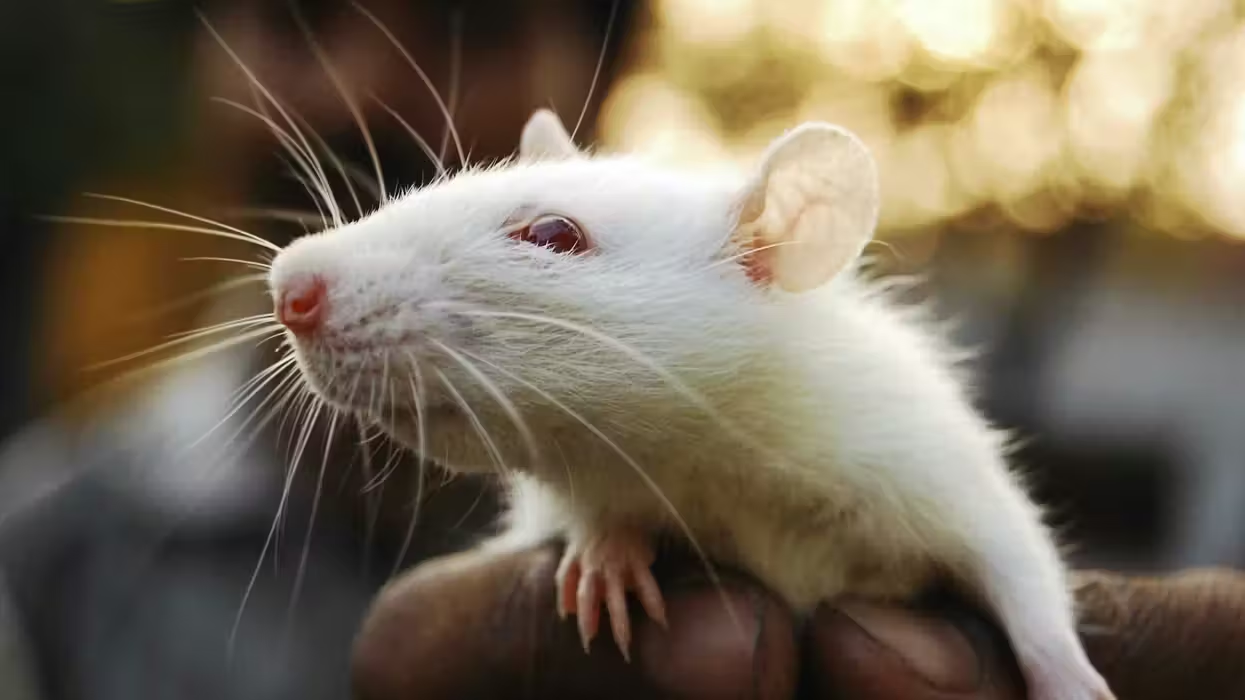
© 2026 Blaze Media LLC. All rights reserved.
How 3D Printing Technology Created a Special Part for Baby's Windpipe and Saved His Life
May 24, 2013
“He has not had another episode of turning blue."
Innovators are increasingly using 3D printing technology for everything from creating firearms (and bullets) to meat and veggies to custom prosthetics. On the medical side they're working on printing body parts that include biomaterial to reduce rejection rates.
A baby born with a condition that frequently collapsed his windpipe has been saved thanks to 3D printing being able to make a custom splint out of a material that would eventually dissolve safely into the body.
 Kaiba, while still an infant, had a condition that collapsed his lungs when he breathed out. Doctors were able to use 3D printing technology to make a splint. (Image: YouTube screenshot)
Kaiba, while still an infant, had a condition that collapsed his lungs when he breathed out. Doctors were able to use 3D printing technology to make a splint. (Image: YouTube screenshot)
Doctors at the University of Michigan were able to apply for an emergency clearance from the Food and Drug Administration to make a tracheal splint for the then infant, Kaiba Gionfriddo.
Before receiving the splint, Kaiba would stop breathing frequently and would need to be resuscitated. Doctors said in his current state before the operation, even with some treatments, he "was imminently going to die."
The splint surgically implanted into the now 20-month-old was sewn in such a way that it would expand the collapsed bronchus and give it the support it needed to grow properly and strong.
 This is a model of Kaiba's trachea and bronchi. The splint was slipped over one of the bronchus. (Image: YouTube screenshot)
This is a model of Kaiba's trachea and bronchi. The splint was slipped over one of the bronchus. (Image: YouTube screenshot)
 Here's what the splint looks like. (Image: YouTube screenshot)
Here's what the splint looks like. (Image: YouTube screenshot)
“It was amazing. As soon as the splint was put in, the lungs started going up and down for the first time and we knew he was going to be OK,” U of M associate professor of pediatric otolaryngology Glenn Green said according to the university's website.
Not only that, but the material the splint was made out of -- a biopolymer called polycaprolactone -- is designed to be reabsorbed into the body over a period of three years, at which point Kaiba's own bronchus should be fully functional.
 Kaiba at 20 months has not had to go back on a respirator since the operation. (Image: YouTube screenshot)
Kaiba at 20 months has not had to go back on a respirator since the operation. (Image: YouTube screenshot)
“The material we used is a nice choice for this. It takes about two to three years for the trachea to remodel and grow into a healthy state, and that’s about how long this material will take to dissolve into the body,” professor of biomedical engineering and mechanical engineering and associate professor of surgery Scott Hollister said, according to U of M. “Kaiba’s case is definitely the highlight of my career so far. To actually build something that a surgeon can use to save a person’s life? It’s a tremendous feeling.”
“He has not had another episode of turning blue,” Kaiba's Ohio mother April Gionfriddo told the university. “We are so thankful that something could be done for him. It means the world to us.”
Watch U of M's video about the innovative material that helped save Kaiba:
Publishing the success in the New England Journal of Medicine, the doctors believe the biomaterial they used to 3D print the custom splint could be used for a variety of medical functions, such as to help rebuild bones.
(H/T: Popular Science)
--
Related:
Want to leave a tip?
We answer to you. Help keep our content free of advertisers and big tech censorship by leaving a tip today.
Want to join the conversation?
Already a subscriber?
more stories
Sign up for the Blaze newsletter
By signing up, you agree to our Privacy Policy and Terms of Use, and agree to receive content that may sometimes include advertisements. You may opt out at any time.
Related Content
© 2026 Blaze Media LLC. All rights reserved.
Get the stories that matter most delivered directly to your inbox.
By signing up, you agree to our Privacy Policy and Terms of Use, and agree to receive content that may sometimes include advertisements. You may opt out at any time.





